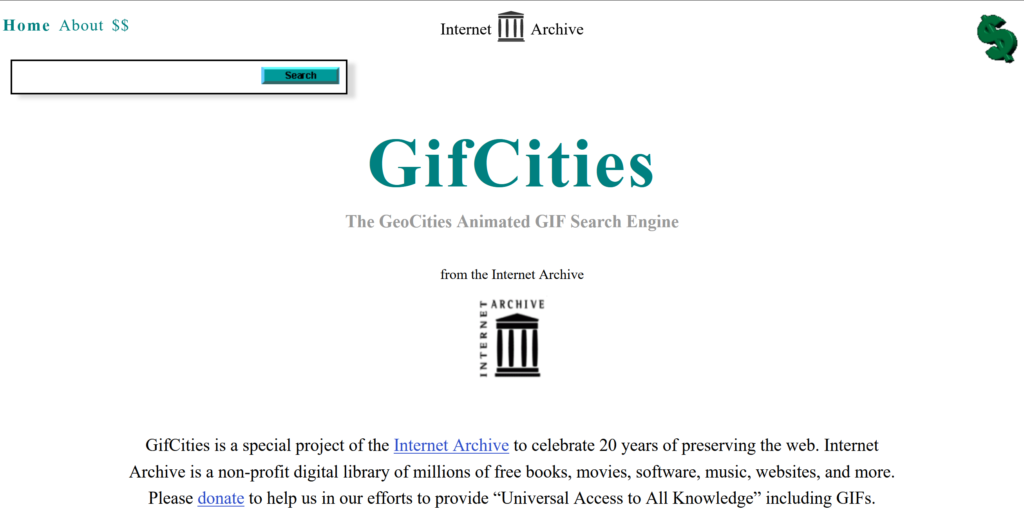
GeoCities has been gone for fifteen years now, about as long as it was alive, and it’s still sorely missed. It was shut down by Yahoo, which seems to exist purely to kill good things during downturns. (See also: Yahoo Directory.) It’s just a “brand” now; the company formerly known as that changed its name to “Altaba,” and then itself died.
GeoCities was a place where anyone could make a static website, for free (although with frames and ads). This isn’t the place to recount the full story, but at the time it had kind of a reputation. Since anyone could make a site there, and having a site was a big thing in those heady early World Wide Web days, a lot of people did make them. It was their first site in a lot of cases; in many cases, it was their only site. And before social media and Google’s decay, you could even reasonably expect to find GeoCities sites, if they were good.
So a lot of web newbies made sites, and they perpetrated all kinds of design atrocities in the process. Back then we rolled our eyes and held our noses, but now that time is remembered with fondness.
There are multiple places where you can go back and explore old GeoCities sites, although with varying degrees of stability. Try checking Restorativland or Oocities. Or the Internet Archive’s GeoCities collection.
One of the most egregious of the many sins made by GeoCities users was the overuse of animated GIFs. GIFs themselves are their own throwback to the early era, and actually predate the World Wide Web. The image format was created at Compuserve in 1987, while the first web browser was released on Christmas Day, 1990. Now Compuserve is long gone, although their website, amazingly, is still up, offering an early 2000’s style web portal experience, and while it’s likely no one human is curating its links, some one, or thing, is still updating its copyright date.
I seem to be discursing a lot today, but I am actually closing in on today’s true subject, just with a flight plan best described as a wide, lazy spiral. Here we go. GIFs, that relic of ancient Compuserve, once the subject of an infamous software patent owned by even older pre-web tech company Unisys that threatened to strike the format from the internet, is the only thing of Compuserve that really thrives today.
There are other animation file formats. There’s MP4 and its progeny, of course. Google has a version of webp that has animation, but people don’t trust Google so much anymore. GIFs are also limited: it’s an indexed graphics format that maxes out at 256 colors. But there are many ways to make them, all the major browsers support them, many social media sites support them, and they doesn’t have Google’s sterile, chlorine-like stink about them, so they survive. Improbably, awesomely, people still make, use and view GIFs today.


Google Meetup, or whatever the hell they call it now, has an interface for searching for GIFs to use, and Discord does too. There’s a site, the slightly-incorrectly named GIPHY, that hosts them and lets you search for them. Arguably GIFs are more popular than ever. But the acknowledged Golden (well, maybe Tarnished Bronze) Age of GIFs was the Geocitiene Era.
Well, now the Internet Archive has an amusingly-styled site, GifCities, where you can search through an archives of the GeoCities site collection.

It doesn’t seem to have a lot to go by when doing its text search? My “Nethack” search only turned up two GIFs, both found from the term’s inclusion in their origin URLs. These are them:


I don’t get that eye one, but the second one’s kind of snazzy, if not really that useful. Still-someone worked to construct each of them, and I like that their work is commemorated, and even available for others to use today. Most of the Old Web, by weight, is lost now, so let’s cherish what remains.
